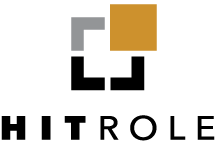VORTEX Matrix
A Comprehensive Framework for Business Growth
In today’s dynamic business landscape, success relies not only on having a great product but also on continuously adapting to different stages of growth. The VORTEX Matrix offers businesses a clear, structured approach to assess their current operations, align cross-functional collaboration, and ensure long-term profitability through strategic stress testing.
The VORTEX Matrix focuses on key components such as Operational Stance, Business Stage, Value Quality, Profit, KPIs, Cross-Functional Collaboration, and Stress Testing Mechanism to guide companies through the evolving business environment. Let's explore how the VORTEX Matrix can be applied across various business stages and operational models.
1. Discretionary Operational Stance (Startup Stage)
Value Quality: Basic product or service with low differentiation.
Profit: Low to negative, as the business is still in its early stages.
KPIs: Customer Acquisition Rate, Burn Rate.
Cross-Functional Collaboration: Initial team alignment with small-scale collaboration across departments.
Stress Testing: Focus on testing market viability and assessing whether resources can support the business’s potential growth.
At this stage, businesses are finding their product-market fit. The goal is to acquire customers and establish a basic operational foundation while managing cash flow challenges.
2. Systemized Operational Stance (Growth Stage)
Value Quality: Enhanced value with consistent quality delivery.
Profit: Increasing but often reinvested into growth.
KPIs: Revenue Growth Rate, Customer Retention.
Cross-Functional Collaboration: Strong integration between operations, marketing, and sales to fuel expansion.
Stress Testing: Assess the business's ability to scale, identify bottlenecks in operations, and address capacity challenges.
During the growth stage, businesses must ensure consistent quality while scaling rapidly. Cross-functional collaboration is key to smooth growth, and identifying operational bottlenecks is critical.
3. Systemized Operational Stance (Turnaround Stage)
Value Quality: Focus on correcting quality issues and regaining market trust.
Profit: Low or negative due to challenges being faced.
KPIs: Customer Satisfaction, Cash Flow.
Cross-Functional Collaboration: Crisis management teams and task forces collaborate across the company to drive recovery.
Stress Testing: Test recovery strategies and implement cost-saving measures to stabilize the business.
In this stage, businesses are focused on correcting missteps, rebuilding customer trust, and aligning their operations to manage cash flow.
4. Systemized Operational Stance (Re-alignment Stage)
Value Quality: Strong value adapted to meet evolving customer needs.
Profit: Stable, moderate profit levels as the business re-aligns.
KPIs: Employee Engagement, Process Efficiency.
Cross-Functional Collaboration: Leadership and operational teams work closely to adapt strategies and streamline processes.
Stress Testing: Test market adaptability and process efficiency to ensure that the business can handle shifting market dynamics.
Here, companies are re-evaluating and adapting to changing market conditions, ensuring their operational processes are optimized for future success.
5. Automated Operational Stance (Maturity Stage)
Value Quality: High-value product or service, highly differentiated from competitors.
Profit: High profit margins and substantial market share.
KPIs: Profit Margins, Market Share.
Cross-Functional Collaboration: Full automation and coordination across teams, supported by technology.
Stress Testing: Assess long-term sustainability and operational efficiency.
At this stage, businesses benefit from streamlined, automated processes and high-profit margins, focusing on sustainability and maintaining a competitive edge.
6. Automated Operational Stance (Transition Stage)
Value Quality: Optimized for efficiency with high customer satisfaction.
Profit: Sustained and maximized profit levels.
KPIs: Cost Per Acquisition, Profit Maximization.
Cross-Functional Collaboration: Technology-driven collaboration across all functional teams.
Stress Testing: Test automation processes to ensure scalability and optimize for cost-efficiency.
In the transition stage, companies focus on refining their automated processes and maximizing profitability while keeping customers highly satisfied.
Conclusion
The VORTEX Matrix provides a clear, actionable framework that can be adapted to any business stage, whether a startup looking to establish itself or a mature company seeking to sustain its competitive advantage. By analyzing key factors like operational stance, cross-functional collaboration, and value quality, businesses can systematically navigate challenges and capitalize on opportunities at every phase of their journey.
Use the VORTEX Matrix today to ensure your business is prepared for the future—whether that’s scaling up, realigning, or entering a new stage of growth.

